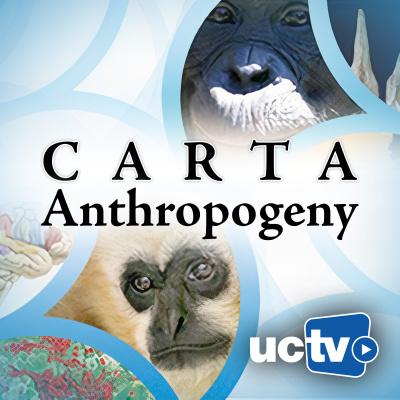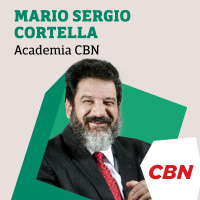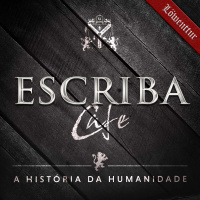Sinopsis
Multidisciplinary researchers explore the origins of humanity and the many facets of what makes us human.
Episodios
-
CARTA: How Did Lucy Become a Fossil? Investigating the Life Death and Preservation of a Famous Hominin with Anna Behrensmeyer
23/08/2024 Duración: 21minLucy's 1974 discovery reshaped our understanding of early hominins. Geological studies dated her to 3.21 million years ago. Questions arose about her life and death, leading to investigations into her burial site and skeletal preservation. Found scattered on the surface, less than 40% of her skeleton was preserved. Some parts were articulated, indicating rapid burial, possibly by a river. Missing elements suggest scavenging and erosion. Debate surrounds her cause of death, with theories including a fall or predation. Bone fractures hint at trauma, but the exact circumstances remain unclear. Geological evidence disputes death by mudslide or flood. Tooth marks on her bones lack conclusive evidence of predation. These debates underline Lucy's enduring influence on paleoanthropology, sparking ongoing research into human evolution. Series: "CARTA - Center for Academic Research and Training in Anthropogeny" [Humanities] [Science] [Show ID: 39823]
-
CARTA: How the Paleo Diet Worked for Lucy-and Led to Us with Jessica Thompson
16/08/2024 Duración: 19minLucy's discovery in eastern Africa reshaped human origins research, highlighting our ancestors' diverse habitats. Initially thought vegetarians like chimpanzees, Lucy's group were adaptable omnivores. Recent findings suggest they used tools and hunted, challenging notions of early human development. This raises questions about when humanity's defining traits emerged. Did Lucy's dietary flexibility pave the way for our intelligence and tool use? Ongoing research aims to unravel these mysteries, using innovative methods to understand ancient diets and behaviors. Series: "CARTA - Center for Academic Research and Training in Anthropogeny" [Humanities] [Science] [Show ID: 39822]
-
CARTA: Lucy - Welcome and Opening Remarks
10/08/2024 Duración: 03minLucy is one of the most famous fossils of all time. The discovery of this species had a major impact on the science of human origins and evolution. Why? What was that impact? The symposium speakers—each a prominent scientist in their field—will address this question and specifically discuss the discovery’s impact through time, starting with the first few years after the discovery, the lasting impact, and the state of the art in that research area today. We're celebrating the 50th anniversary of the discovery of the fossil skeleton “Lucy” with the aim of reigniting a global interest in how we “became human” and promoting the importance of connecting our human past to the global future on the planet. Series: "CARTA - Center for Academic Research and Training in Anthropogeny" [Humanities] [Science] [Show ID: 39829]
-
CARTA: Lucy and Evolution of Hand Dexterity and Tool Use with Tracy Kivell
10/08/2024 Duración: 19minThe discovery of Lucy in 1974 gave insight into early hominin body form but lacked hand bones. Subsequent findings revealed Australopithecus afarensis hand morphology. New discoveries and research since then, including associated hand skeletons and archaeological evidence, have enhanced our understanding of hominin hand evolution and tool use. These advancements inform us about Lucy's tool-related abilities and dexterity, reshaping our interpretation of early human behavior. Series: "CARTA - Center for Academic Research and Training in Anthropogeny" [Humanities] [Science] [Show ID: 39821]
-
CARTA: What Was Lucy’s Impact on our Understanding of Bipedality Diet and Encephalization? with Carol Ward
01/08/2024 Duración: 19minPaleoanthropology is booming with discoveries, reshaping our understanding of human evolution. Lucy's 1974 find stands as a milestone, providing crucial insights into early hominins. Her species, Australopithecus afarensis, remains a key reference, revealing bipedalism and dietary adaptations. Recent findings suggest bipedality evolved from arboreal upright apes, not chimpanzee-like ancestors. Earlier australopiths show bipedality predates dietary changes, indicating walking aided dietary shifts. Some australopiths may have used stone tools before significant brain enlargement in Homo. Lucy's discovery led to an explosion of insights, showing she was part of a diverse group of bipedal apes in the mid-Pliocene. Lucy remains central to understanding human evolution, highlighting the importance of her discovery in shaping our knowledge. Series: "CARTA - Center for Academic Research and Training in Anthropogeny" [Humanities] [Science] [Show ID: 39820]
-
CARTA: The Savanna Hypothesis: Tracing an Enigmatic Idea Through Time with Kaye Reed
26/07/2024 Duración: 15minThe savanna hypothesis suggests that early human ancestors evolved in open grasslands. Raymond Dart's 1925 discovery of Australopithecus africanus at Taung supported this idea. Lucy's 1974 discovery confirmed bipedalism in Australopithecus species but raised questions about their tree-dwelling habits. Studies since then have refined our understanding of ancient habitats and climates, showing that human evolution involved interactions with various environments, not just savannas. This requires a nuanced view of biomes, climates, and habitats to understand how early humans adapted and evolved. Series: "CARTA - Center for Academic Research and Training in Anthropogeny" [Humanities] [Science] [Show ID: 39819]
-
CARTA: What Was Lucy’s Impact on Our Understanding of Other Australopith Relatives? with Bernard Wood
22/07/2024 Duración: 20minIn 1974, understanding early human evolution was limited. Lucy's discovery provided insights into one early hominin, while her species, Australopithecus afarensis, revealed broader patterns. The abundance and quality of A. afarensis fossils help understand diversity, relationships, and the pace of evolution among hominins. Lucy's ilk sheds light on crucial topics such as taxic diversity, phylogenetic relationships, and the tempo of evolution within the hominin clade. They are key to unlocking the secrets of hominin evolutionary history before and after A. afarensis, offering valuable context for fossils found in southern and eastern Africa. Series: "CARTA - Center for Academic Research and Training in Anthropogeny" [Humanities] [Science] [Show ID: 39818]
-
CARTA: Lucy's Children and Human Origins with Zeray Alemseged
18/07/2024 Duración: 21minOwing to its morphological and temporal placement, the Lucy species, Australopithecus afarensis, plays a pivotal role in our understanding of the human evolutionary career. Though many more fossil remains were recovered subsequent to Lucy’s discovery, the impact of the latter cannot be overstated not least its role as a trove of scientific data as well as its iconic nature. Research on Lucy and its species and continued fieldwork have inspired many research projects across Africa especially the Afar region of Ethiopia. One such project is the Dikika Research Project, which has discovered the earliest and most complete skeleton of a juvenile A. afarensis, dating back to 3.32 million years ago, filling in a major gap in our knowledge of the species. Here, I will briefly discuss what we learn from this skeleton about the Lucy species and what that implies to our knowledge of the many descendants of A. afarensis including our own species. Series: "CARTA - Center for Academic Research and Training in Anthropogeny"
-
CARTA: The Discovery and Initial Interpretation of ‘Lucy’ as a Tipping-Point in Paleoanthropology with Ian Tattersall
13/07/2024 Duración: 17minThe discovery of Lucy, a fossil from the 1970s, changed paleoanthropology. Before Lucy, scientists saw human ancestors as rough guides, not distinct species. This mindset dominated the interpretation of fossils. Lucy's discovery, representing a new species called Australopithecus afarensis, showed the need to define species clearly. The clash of old and new views was seen in a 1981 debate between Richard Leakey and Donald Johanson. Leakey's refusal to offer an alternative emphasized flaws in traditional practices. This marked a shift towards a better understanding of human origins and diversity, despite some scientists holding onto old ways. Series: "CARTA - Center for Academic Research and Training in Anthropogeny" [Humanities] [Science] [Show ID: 39816]
-
CARTA: Before Lucy: The State of Knowledge on Human Origins with Donald Johanson
29/06/2024 Duración: 12minSince entering into the field of paleoanthropology in 1970, Donald Johanson has found a more focused and rigorous implementation of an expanded collaborative, multinational, transdisciplinary strategy of inquiry with the application of new theoretical and technical innovations that has resulted in a richer picture of our origins and a deeper understanding of how we became human—not only in Africa, but Eurasia as well. The discovery of Lucy 50 years ago provides an appropriate benchmark by which to contrast what we know in 2024 versus what we thought we knew prior to her discovery in 1974. Knowledge of the environment in which our ancestors lived and interacted and successfully navigated the challenges of survival is now coming into clearer focus. We are in a period of specialization, and it is imperative to embrace an integrated approach that melds biological and cultural evolution. Only in this way can we continue to provide a more far-reaching vision of our ancestry. Series: "CARTA - Center for Academic Res
-
CARTA: Body Modification - Questions Answers and Closing Remarks
01/04/2024 Duración: 01h23minPermanent body modification is a unique and variable practice among humans, not observed in other mammals. Despite being costly and risky, it is regularly performed. Scientific understanding of this phenomenon is nascent, prompting a symposium aiming to assess current research status and prioritize questions for the next decade. The event brings together academics and industry practitioners, exploring historical and contemporary practices like tattooing, piercing, finger amputation, and cranial modification. The symposium aims to investigate the 'when' and 'where' of permanent body modification and understand the motivations behind it, considering personal justifications and scientific hypotheses. Series: "CARTA - Center for Academic Research and Training in Anthropogeny" [Humanities] [Science] [Show ID: 39476]
-
CARTA: Lip Plates in Ethiopia with Shauna LaTosky
22/03/2024 Duración: 23minIn the literature on lip plates in Southern Ethiopia there has been a strong emphasis on their socio-cultural importance and little information about their biocultural significance. Shauna LaTosky proposes that cultural keystone species theory and cultural keystone place theory could provide a useful frameworks for understanding relationships between the agro-pastoralist Mursi of Southern Ethiopia and the plant species and places that are integral to maintaining their cultural bodily practices. Keystone designations are applied here to the indigenous fruit tree lomay (Ximenia americana) and special clay pits in recognition of their role in the success of permanent body modification practices such as the piercing and stretching of women’s lower lips, but also in the promotion of health, social well-being and a sustainable environment. Series: "CARTA - Center for Academic Research and Training in Anthropogeny" [Humanities] [Science] [Show ID: 39470]
-
CARTA: The Recent History of Piercing Practices in Europe and North America with Paul King
15/03/2024 Duración: 17minAcross continents, material evidence of body piercing jewelry abounds in the archeological record. However, the varying procedures and processes of piercing, healing, and stretching these wounds for adornment remains unfamiliar to most archeologists. This talk discusses the early self-experimentations that led to the development of the Euro-American body piercing industry. From the late 19th throughout the 20th centuries shared personal correspondence, illustrations, and photographs document the adaptations, innovations, successes, and failures that came to coalesce a current community’s collective knowledge. Understanding the processes of these secretive explorations provides insights into many of the cross-cultural practices of the past for which no clear records remain. Series: "CARTA - Center for Academic Research and Training in Anthropogeny" [Humanities] [Science] [Show ID: 39474]
-
CARTA: Permanent Body Modification in Mesoamerica and Central America with Rosemary Joyce
08/03/2024 Duración: 18minArchaeological research in Mexico and Central America reveals insights into cultural practices, focusing on the history of body modification. Examining long-term patterns helps unravel motivations for adoption, change, and abandonment of these practices. The talk emphasizes how body modification histories in this region illuminate shared identities across linguistic, ethnic, and political boundaries, while also highlighting distinctions within regional traditions and individual societies. It suggests that indigenous societies viewed the human body as shaped by the community, challenging the notion of a universal boundary between the natural body and the social person. Series: "CARTA - Center for Academic Research and Training in Anthropogeny" [Humanities] [Science] [Show ID: 39469]
-
CARTA: Female and Male Genital Modification with Ellen Gruenbaum
01/03/2024 Duración: 18minThis talk offers an overview of the many forms of permanent genital modifications embedded in human cultures, where they occur, the reasons why, the archaeological investigations of origins, and future trends. Included are female clitoridectomy, excision, infibulation, and other practices that affect about five percent of females worldwide; and the male practices that affect one-third of males: circumcision, superincision, and subincision. Why have so many cultures invented and preserved these modifications as part of their valued heritage? Controversies abound: the current human rights opposition to all female practices is met with backlash, and others question the “justifications” for continuing male circumcision. Series: "CARTA - Center for Academic Research and Training in Anthropogeny" [Humanities] [Science] [Show ID: 39471]
-
CARTA: Dental Ablation and Facial Piercing in Late Pleistocene Southwestern Asia and Africa with John Willman
28/02/2024 Duración: 19minBioarchaeological studies of Pleistocene populations, examining practices like tooth ablation, facial piercing, and cranial modification, contribute to our understanding of social identities and population dynamics. Recent analyses of Ohalo II H2 in southwestern Asia and Oldupai Hominid 1 in Tanzania reveal dental evidence of intentional body modifications. Ohalo II H2 likely represents the earliest case of intentional incisor ablation in Southwest Asia, a common practice in Iberomaurusian and Natufian cultures. Oldupai Hominid 1 exhibits dental wear suggestive of facial piercings, a previously unknown practice in Late Pleistocene/Early Holocene East Africa. These early cases shed light on the cultural practices and social identities of Pleistocene populations. Series: "CARTA - Center for Academic Research and Training in Anthropogeny" [Humanities] [Science] [Show ID: 39468]
-
CARTA: Permanent Body Modification: Archaeological and Early Historical Evidence with Brea McCauley
23/02/2024 Duración: 19minToday, permanent body modification (PBM) is very popular. Studies suggest that well over a billion living people have experienced one or more types of PBM. But what is the history of PBM? When did the different types originate? Were they invented recently, or do they have a long history? Did they appear simultaneously or at different times? This presentation examines evidence in non-human animals and extinct hominins, delving into early archaeological and historical records of seven main PBM types: tattooing, scarification, amputation, piercing, genital modification, dental modification, and bone shaping. Strong evidence supports human PBM for at least 15,000 years, with intriguing hints suggesting a history dating back as far as 80,000 years. Series: "CARTA - Center for Academic Research and Training in Anthropogeny" [Humanities] [Science] [Show ID: 39467]
-
CARTA: A Multistep Evolutionary Scenario for the Culturalization of the Human Body with Francesco d'Errico
19/02/2024 Duración: 15minOur ability to adapt our bodies to culture has ancient origins. We suggest a timeline for how the culturalization of the human body evolved, starting around 500-300 thousand years ago. This timeline highlights key moments at 140 thousand years, 70 thousand years, and 45 thousand years, followed by a faster pace linked to the rise of production economies. The underlying idea is a gradual growth in the complexity of technologies shaping the body, along with increased time and effort invested in obtaining and transforming necessary materials. Simultaneously, the development of symbolic codes required the creation of specific cognitive functions and neural circuits, allowing for the decoding of intricate messages conveyed by these cultural practices. These practices likely became more intricate in terms of techniques, symbolic codes, and the involvement of specialized individuals over time to ensure their continuation and potential further development. Series: "CARTA - Center for Academic Research and Training in
-
CARTA: Body Modification - Welcome and Opening Remarks
17/02/2024 Duración: 10minPermanent body modification is a unique and variable practice among humans, not observed in other mammals. Despite being costly and risky, it is regularly performed. Scientific understanding of this phenomenon is nascent, prompting a symposium aiming to assess current research status and prioritize questions for the next decade. The event brings together academics and industry practitioners, exploring historical and contemporary practices like tattooing, piercing, finger amputation, and cranial modification. The symposium aims to investigate the 'when' and 'where' of permanent body modification and understand the motivations behind it, considering personal justifications and scientific hypotheses. Series: "CARTA - Center for Academic Research and Training in Anthropogeny" [Humanities] [Science] [Show ID: 39475]
-
CARTA: The Recent History of Tattooing in Europe and North America with Matt Lodder
17/02/2024 Duración: 20minThis talk presents a new account of the development of professional tattooing in Britain and America since the late 19th century. Research based exclusively in primary sources reveals that the story of what kickstarted the creation of commercial tattooing, and what sustained it, ultimately becomes intelligible as a small and interconnected network of transnational artists and – crucially – clients. These newly clarified networks problematise both the date and form of the customary notion of a “Tattoo Renaissance” in the 1970s and 80s. Moreover, this research presents a more diverse account of the transmission of design, technology and influence throughout Euro-American tattooing than had previously been understood both within the industry, and beyond. Research is drawn from Dr Lodder’s next book on the history of the modern Euro-American tattoo industry, due to be published in late 2024 with Yale University Press. Series: "CARTA - Center for Academic Research and Training in Anthropogeny" [Humanities] [Scienc














